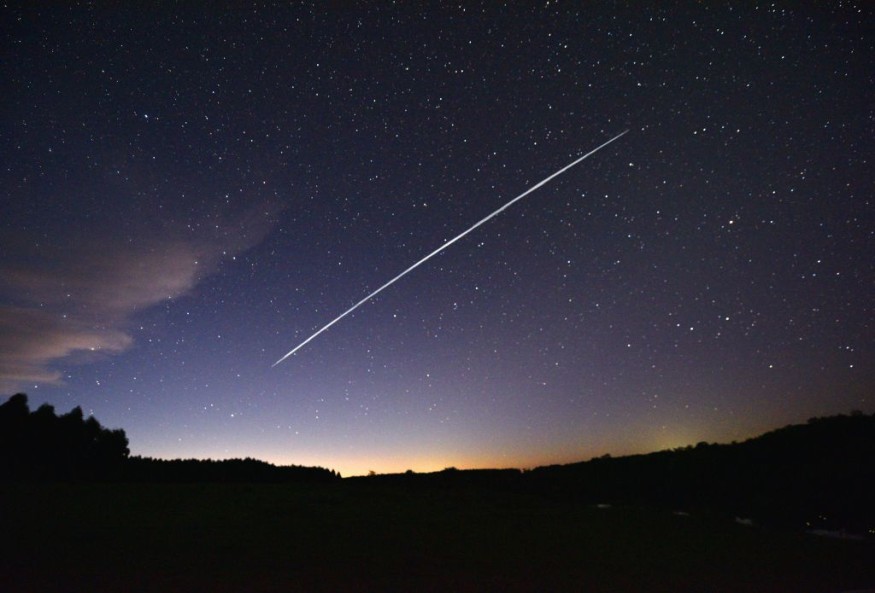
Elon Musk has served as a pioneer in various industries throughout his life. First, he transformed internet shopping after co-founding Paypal, then led the electric vehicle industry with Tesla, and established the commercial space company SpaceX. Under his space company is Starlink, which revolutionizes internet access.
It aims to provide an internet connection worldwide, especially to remote areas. Although this might seem an ideal internet connection setup, it has a glaring problem that might adversely affect space exploration.
This long-exposure image shows a trail of a group of SpaceX's Starlink satellites passing over Uruguay as seen from the countryside some 185 km north of Montevideo near Capilla del Sauce, Florida Department, on February 7, 2021.
Geomagnetic Storm Burned 40 Starlink Satellites
Starlink is a mega-constellation of microsatellites in the Very Low Earth Orbit (VLEO) that provides internet service to its customers on Earth via a ground-based terminal. As of now, 4,408 active satellites are operating and covering almost all of Earth's surface. But they are not designed to last forever and may even be affected by natural phenomena.
A Starlink mission on February 3, which was supposed to send 49 Starlink satellites in space, failed. NBC reported that around 40 satellites were lost due to a geomagnetic storm.
In a statement, SpaceX said eruptions from the Sun triggered the storm that affected the satellites launched into orbit. The now-defunct satellites will fall back to Earth, but Musk's company clarified that the deorbiting satellites would pose no harm to life on Earth as it is designed to burn up upon atmospheric re-entry. That means no orbital debris or satellite parts will hit the ground.
The satellites were sent into orbit via a Falcon 9 rocket from the Kennedy Space Center in Florida, but a geomagnetic storm the next day that increased atmospheric drag up to 50% caused the incident. SpaceX tried to adjust the spacecraft's position to shield it from the storm and minimize darg, but they were unable to boost many of their satellites and lost 40 of them.
ALSO READ: Sun's Tuesday Far Side Eruption Marks One of the Largest Coronal Mass Ejections in Recent History
Solar Flares Threaten Starlink Satellites
The Sun throws a tantrum every now and then by ejecting ionized particles into space, called solar flares. They are high-energy particles that are magnetically charged and interact with the magnetic field. Given these strong forces, it poses great harm to Starlink satellites.
According to Medium, Starlink could face too hot an atmospheric drag that could stop the satellites from reaching their destination and lead to re-entry and burn up like the February 3 mission. If the Sun is particularly active this year, SpaceX will struggle to launch enough satellites to maintain its constellation and leave giant holes causing internet blackouts several times a day.
But it could worsen when solar flares affect the satellites already in orbit. The intense solar flares known as geomagnetic storms could cause fluctuating magnetic fields in lower orbits that induce currents in any satellite present. If the satellite remains on during that time, it could be permanently damaged, disrupt the internet connection and lead to a space catastrophe.
It could cause collision among immobile Starlink satellites and put at least a five-year pause on the space industry, including the Artemis program and Martian mission. For now, it is unlikely to happen. However, it is still better to prepare for substantial solar flares that might cause great damage.
Below is the video of the 40 now-defunct satellites as they re-enter Earth's atmosphere:
RELATED ARTICLE : Elon Musk Wants SpaceX's Starlink to Provide Internet Connection Between Earth, Mars
Check out more news and information on SpaceX and Starlink in Science Times.
© 2025 ScienceTimes.com All rights reserved. Do not reproduce without permission. The window to the world of Science Times.










